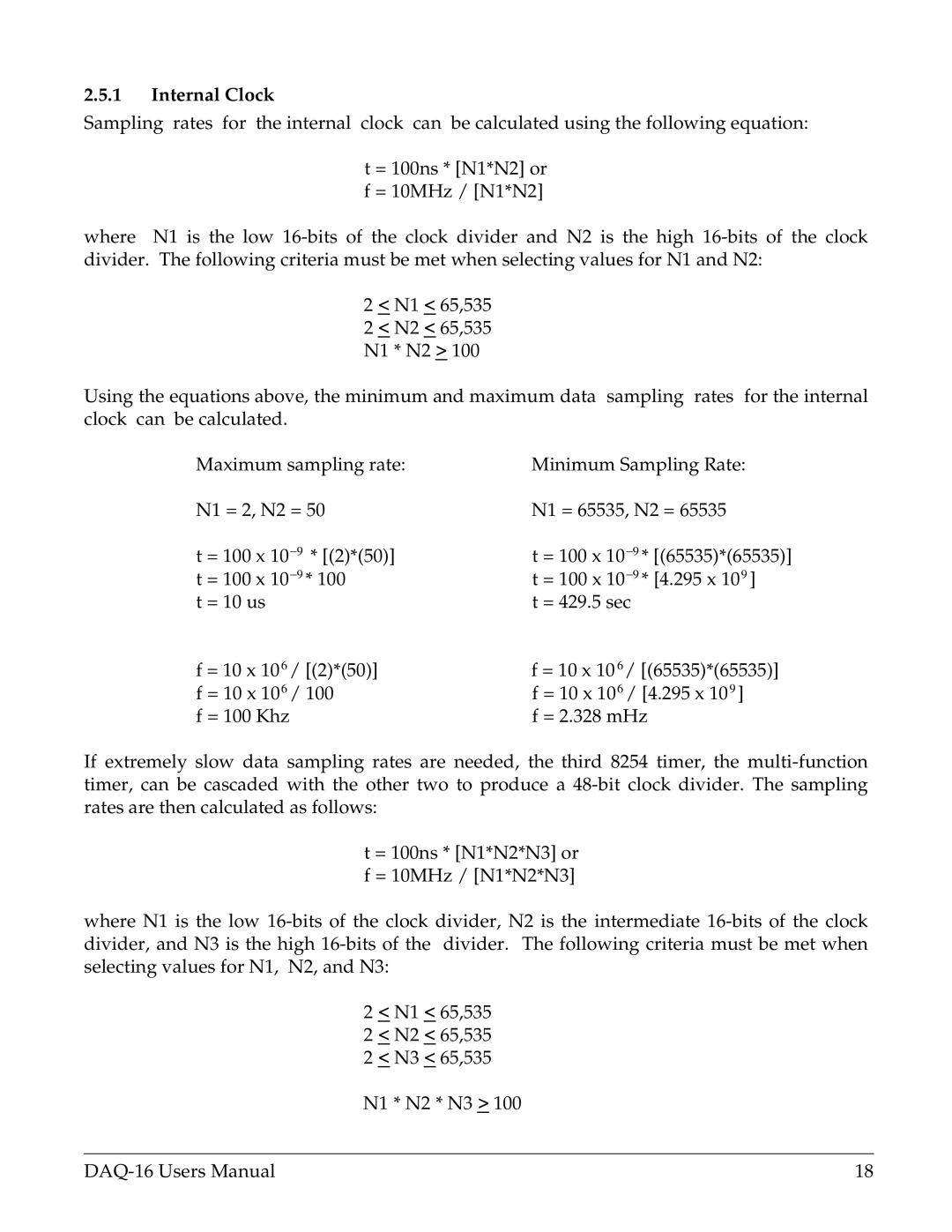2.5.1Internal Clock
Sampling rates for the internal clock can be calculated using the following equation:
t = 100ns * [N1*N2] or f = 10MHz / [N1*N2]
where N1 is the low
2 < N1 < 65,535
2 < N2 < 65,535
N1 * N2 > 100
Using the equations above, the minimum and maximum data sampling rates for the internal clock can be calculated.
Maximum sampling rate: | Minimum Sampling Rate: | ||
N1 = 2, N2 = 50 | N1 = 65535, N2 = 65535 | ||
t = 100 x 10 | −9 * [(2)*(50)] | t = 100 x 10 | −9 * [(65535)*(65535)] |
t = 100 x 10 | −9 * 100 | t = 100 x 10 | −9 * [4.295 x 109 ] |
t = 10 us |
| t = 429.5 sec | |
f = 10 x 106 / [(2)*(50)] | f = 10 x 10 6 / [(65535)*(65535)] | ||
f = 10 x 106 / 100 | f = 10 x 106 / [4.295 x 109 ] | ||
f = 100 Khz |
| f = 2.328 mHz | |
If extremely slow data sampling rates are needed, the third 8254 timer, the
t = 100ns * [N1*N2*N3] or f = 10MHz / [N1*N2*N3]
where N1 is the low
2 < N1 < 65,535
2 < N2 < 65,535
2 < N3 < 65,535
N1 * N2 * N3 > 100
18 |
